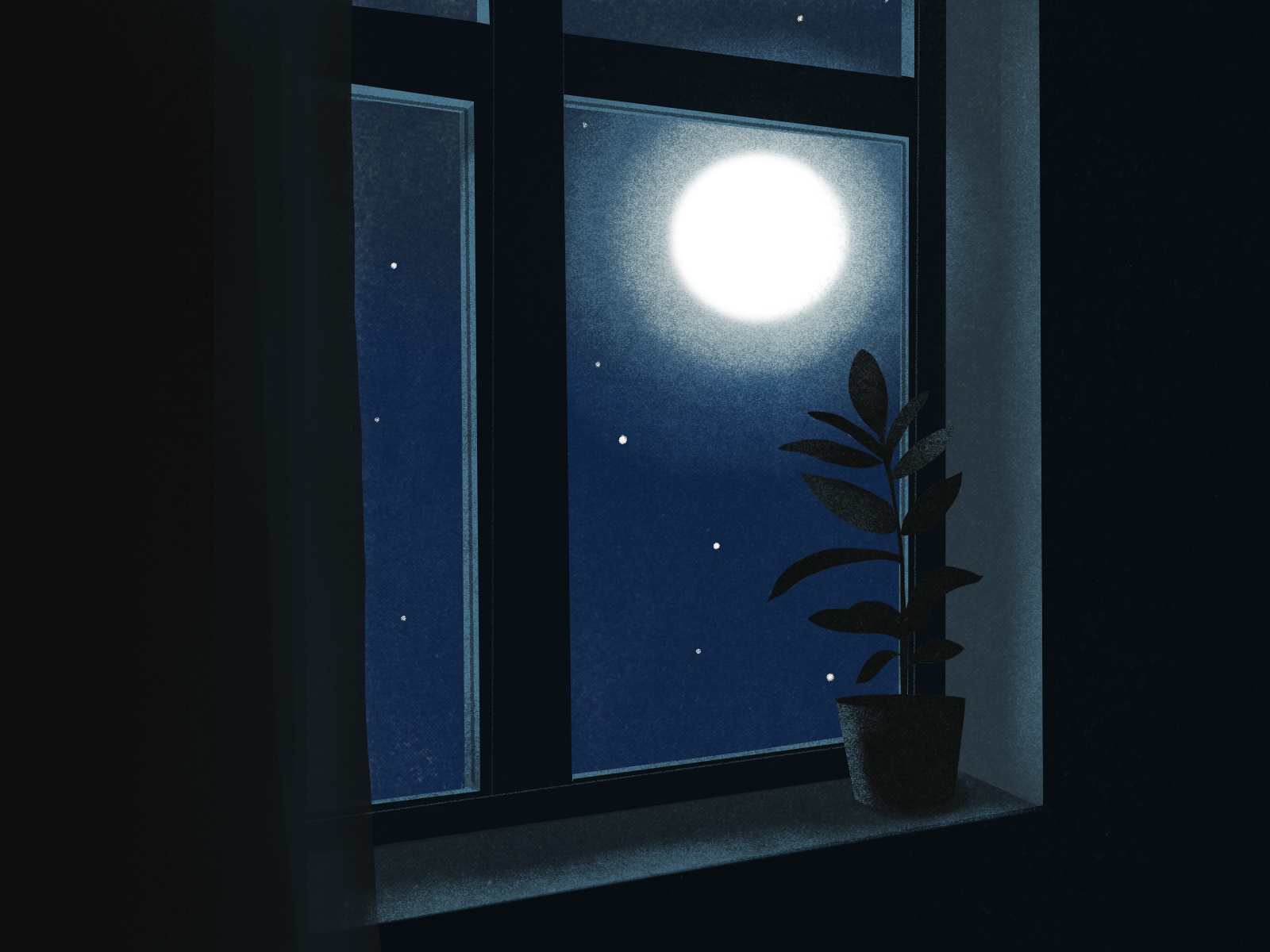Best of the Haiku Challenge (May 2023)
Announcing the winning poems from Tricycle’s monthly challenge The post Best of the Haiku Challenge (May 2023) appeared first on Tricycle: The Buddhist Review.

The best haiku find something unique or meaningful in the poet’s encounter with the passing seasons. In springtime, as the rains penetrate the roots of flowering plants and trees, the life of the planet begins to stir. Moisture rises up from the ground over the course of a day, giving a hazy tinge to everything, and in the evening blurs the edges of the moon. Each of the winning and honorable mention poems for last month’s challenge found emotional resonance in this purely meteorological phenomenon, demonstrating our deep connection to nature.
Marcia Burton’s “childless couple” puts their hope in the hazy moon after fertility treatments have failed. David Landy discovers a place of refuge and reflection in the “blueness” of the blurry moon. Dana Clark-Millar finds consolation in the fact of the spring moon, like her aging eyesight, “being blurry too.”Congratulations to all! To read additional poems of merit from recent months, visit our Tricycle Haiku Challenge group on Facebook.
You can submit a haiku for the June challenge here.
***
WINNER:
a childless couple
testing the fertility
of the hazy moon
— Marcia Burton
The Japanese critic Kenkichi Yamamoto (1907-1988) once suggested that the best haiku strike a balance between humor and existential isolation. “Loneliness in life and the comical elements of life are two sides of the same coin,” he wrote.
On a mild spring night, a childless couple is “testing the fertility” of a hazy moon. The euphemism is humorous, the situation is not. It seems that conventional fertility treatments have failed; otherwise, the poet would not have identified the couple as “childless.” Now they are at the mercy of the moon.
According to haiku master Mayuzumi Madoka, the season word “hazy moon” expresses one of the most essential attributes of spring: the way the world “thaws, warms, and grows suffused with softness.” It’s a beautiful image that carries within it the hope for regeneration and renewal. Why, then, is that not the dominant mood of the poem?
The essence of this haiku lies not in the possibility that the couple may, against all odds, conceive a child aided by the hazy moon, but that they may not.
The global fertility rate for humans has fallen by more than half since 1950. The reasons for this decrease are complex, involving factors like advances in gender equality, women’s education, and reproductive rights. In some regions, environmental pollutants may also play a part. But a global trend is no consolation for the couple unable to conceive.
Is there something funny in all of this after all, even something wise? Yamamoto would say there is. For better or worse, human beings are driven by desire, and desire is life force. The couple has not given up, in spite of everything.
I am reminded of the Zen story about the monk pursued by two tigers. One tiger chases him over the edge of a precipice, where he hangs precariously by a vine. The other waits below him, should he decide to let go. As the vine begins to give way, the monk notices a berry hanging right at eye level. With his free hand, he plucks it . . . and pops it into his mouth.
HONORABLE MENTIONS:
After we parted,
I lingered in the blueness
of the blurry moon.
— David Landy
my aging eyesight
finding comfort in the moon
being blurry too
— Dana Clark-Millar
♦
You can find more on May’s season word, as well as relevant haiku tips, in last month’s challenge below:
Spring season word: “blurry moon” or “hazy moon”
during the blackout
alone in the kitchen, but
for the blurry moon
—Hattori Nami (b. 1947)
Submit as many haiku as you wish that include the spring season word “blurry moon” or “hazy moon.” Your poems must be written in three lines of 5, 7, and 5 syllables, respectively, and should focus on a single moment of time happening now.
Be straightforward in your description and try to limit your subject matter. Haiku are nearly always better when they don’t have too many ideas or images. So make your focus the season word and try to stay close to that.
REMEMBER: To qualify for the challenge, your haiku must be written in 5-7-5 syllables and include the words “blurry moon” or “hazy moon.”
Haiku Tip: Explore the Range of a Season Word
From the beginning, the moon has been a favorite subject for haiku poetry—especially the full moon of autumn and the “hazy” or “blurry” moon of spring. The Japanese haiku master Mayuzumi Madoka writes of the latter:
Meteorologically, the blurring of the moon in spring is explained as a consequence of the approaching low atmospheric pressure. In Japanese poetry blurriness has been regarded as one of the attributes of spring when the world thaws, warms, and grows suffused with softness.
Because of its long history, there are many examples to draw from in exploring the range of this season word.
Basho approached it humorously in 1692:
the cats have finished
making love hazy moonlight
spreads through the bedroom
The peacefulness of the moonlight after the caterwauling has ceased suggests a comical parallel to human lovemaking and its aftermath.
Buson used the same season word to craft a comical self-portrait in 1773:
such love for myself
the arm that cradles my head
by the hazy moon
And in 1814, Issa produced a delightful haiku in his unmistakably simple, heart-felt style:
balanced on a pole
I set out in the garden
stands the hazy moon
We find a more modern approach in the early 20th century. Takehisa Yumeji (1884-1934) was an artist who gave lectures on painting in Europe and the United States. His hazy moon haiku, translated by Janine Beichman, offers a daring treatment of the traditional theme:
The mole at the nape of
her neck spells danger
under the hazy moon
Writing about this haiku, the critic Ozawa Minoru observed wryly that Yumeji, who was famous for his paintings of beautiful women, must have been standing very close to his subject to have noticed a mole at her neckline by the light of a hazy moon.
Finally, our sample haiku for this month’s challenge, written in 2011, uses “blurry moon” to express a uniquely 21st-century emotion called solastalgia—a term coined by the philosopher Glenn Albrecht in 2005 to describe the emotional distress felt by people experiencing negative change as a result of environmental or climatological disruption.
during the blackout
alone in the kitchen, but
for the blurry moon
—Hattori Nami (b. 1947)
As reported by the poet in So Happy to See Cherry Blossoms: Haiku from the Year of the Great Earthquake and Tsunami, edited by Mayuzumi Madoka:
On the night of March 11, my town, assaulted by the tsunami, had lost all the life lines, everything left in mud and darkness. Anxious in the continuing aftershocks, I thought to cook rice on a kerosene stove and went into the kitchen and saw a blurry moon was out. That had a soothing effect on my heart.
Hattori was 64 at the time of the Fukushima Daiichi disaster, which caused the deaths of nearly 20,000 people and the permanent dislocation of 116,000.
So Happy to See Cherry Blossoms contains 126 haiku written by survivors under Madoka’s guidance as a way of healing from trauma. The poems contain traditional season words, some of which, like “blurry moon,” have been in use since Basho’s day. Which proves that the themes of haiku never go out of fashion. They remain current because poets continue to use them to record their experiences and to express their deepest feelings about life.

 JaneWalter
JaneWalter 
































